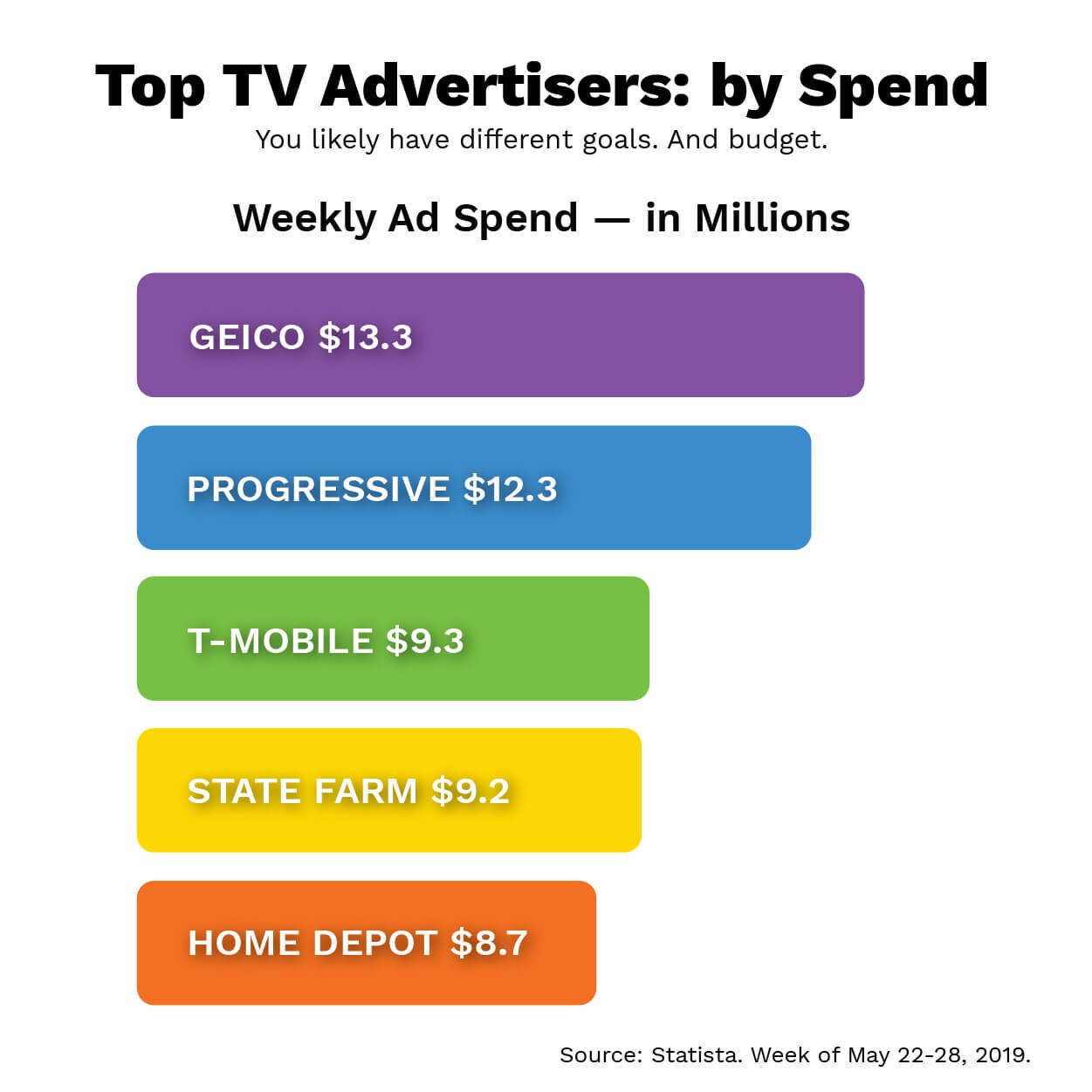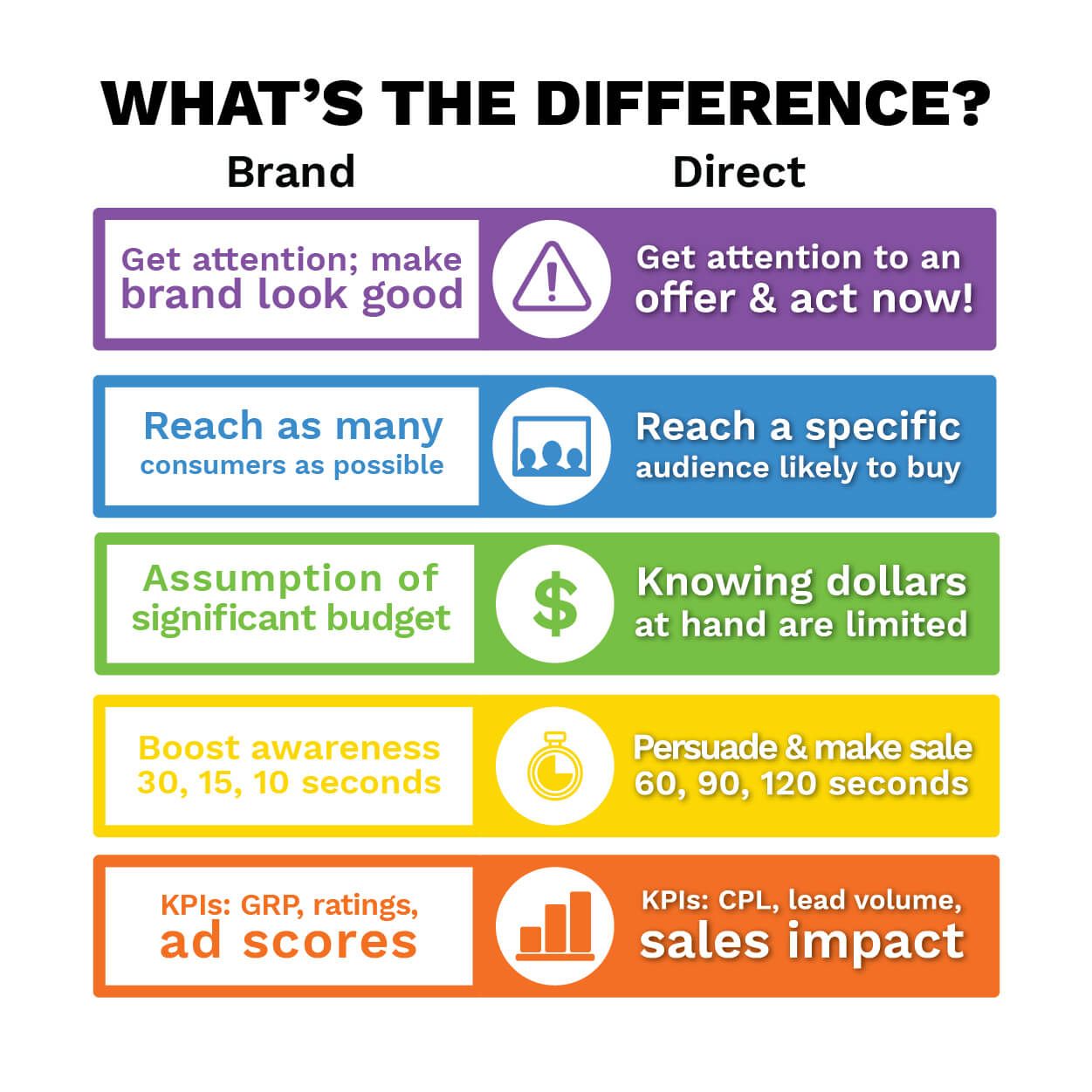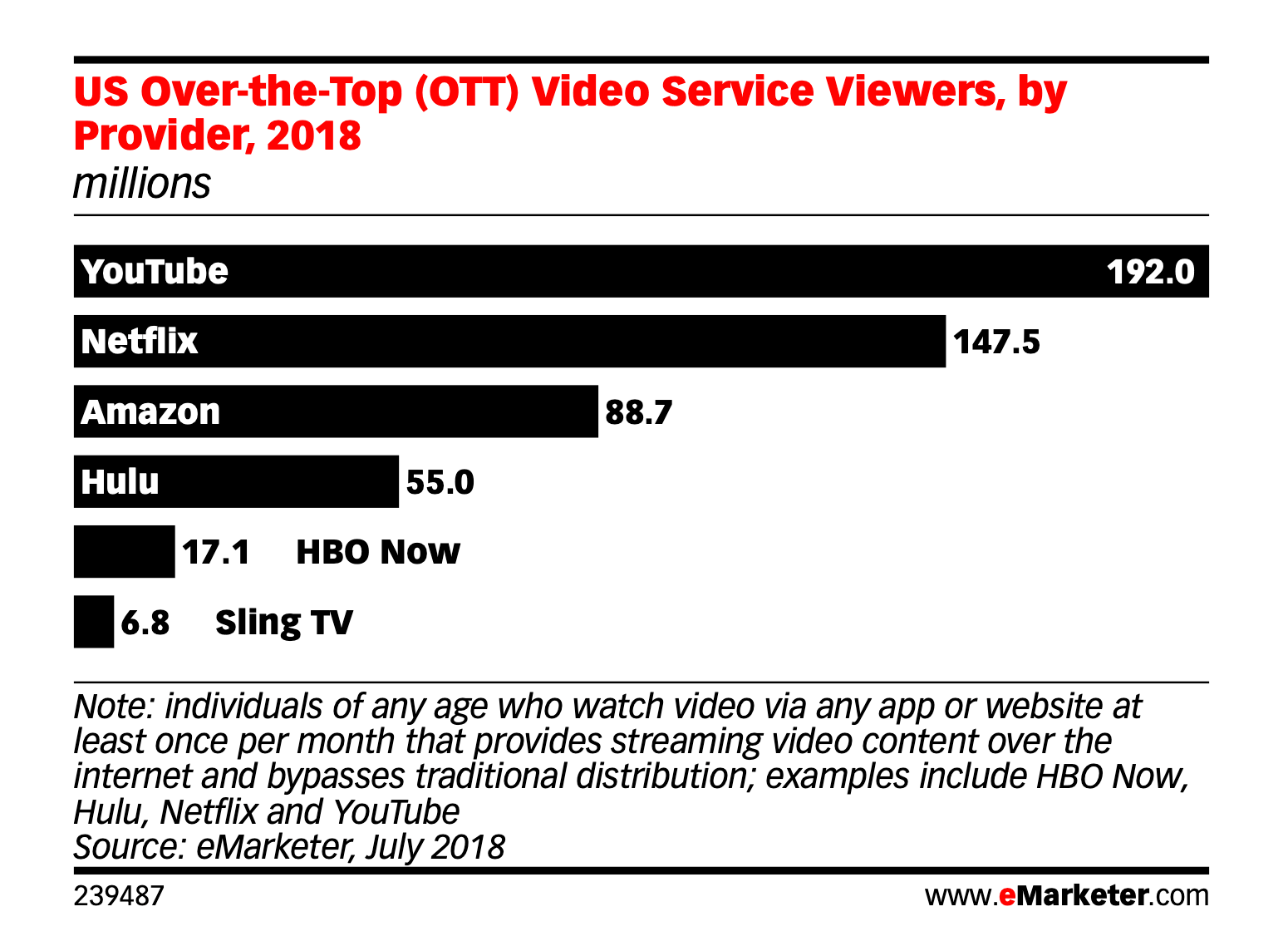5 Ways Direct Response TV Is “Crazy” Different From Brand TV … And Better!
Len Zappolo DRTV, Response Marketing, Trends and POVLook to General Advertising for impressions, reach, and awareness. Turn to Direct Response when you need leads, conversions, and sales!
The Great TV Advertising Paradox: Watching “TV,” whether traditional-linear, connected, over-the-top (OTT), on a mobile device, or desktop, you expect most video ad campaigns to be cute, clever, attention-getting, and run during highly prized times of the day. Anything else would be crazy!
But before you decide that’s the only “sane” way to go, based on what “Top 50” TV advertisers are doing, take a moment to define your goals and budget. Do they align with theirs?
- Is your goal to build awareness for a product or service so people can buy at a future time when they decide they have the need?
- Do your sales depend on 80% of the population having unaided recall of your offer?
- Is your media budget $8-$10 million — a week — with a 52-week campaign schedule?
Focused expertise: How DMW does TV differently. Chances are those criteria do not fit your marketing situation. Even as they fairly accurately describe what you’d find in a Google search of “Top 10 TV Commercials,” or “Best Super Bowl Ads.”
Like our typical clients however, you’re likely tasked with “crazy” marketing goals directly linked to immediate leads and sales. Like generating hard-nosed, bottom-line results in a limited timeframe with a much more limited budget.
You, like most of our clients, are focused on a different end-goal, so on our clients’ behalf, we focus on a different approach that’s very unlike Comcast, Coke, or Toyota’s campaigns.

Quite honestly, it’s highly unlikely, impossible really, to see the results you want if you emulate ad campaigns such as Budweiser’s “Dilly, Dilly!,” Progressive’s Flo, or Geico’s walrus, gecko, or cavemen. Those well-known TV campaigns aren’t what our clients need. AT&T’s thing … that’s not our thing, either.
To reach the hard-nosed results objectives our clients — mid-sized regional brands — are faced with delivering, nearly everything we do has to be significantly different. In ways that can seem peculiar, odd, or outright crazy, compared with what might be considered a “typical” TV campaign.
Why DRTV may seem “weird” compared to brand TV. Best-in-class brand TV spots are created to build awareness and memorability. With media plans built around reach, frequency, and impressions. The ads run now, toward future sales to follow. The campaigns we do are tasked with getting immediate leads, hitting specific cost-per-lead (CPL) objectives, and making a direct impact on sales ASAP — not over the long term. We focus on reach, frequency, and impressions as secondary considerations.
Our clients oftentimes don’t have the time to make consumers feel good, inclining them to make a future purchase. They need them to call or click now to get more information, a quote — and buy! And the last thing we need is someone saying: “I saw this great spot, it had

At DMW, our approach to TV campaigns is to target viewing audience(s) using a range of proven techniques, encompassing everything from how we approach TV creative to our media buying strategies.
5 “Crazy” ways we deliver winning, high-performance TV campaigns
1. BUY DAYPARTS … why 12 noon to 3 PM outperforms Prime Access or Prime Time. Yes, it runs counter to expectations, but years of testing and monitoring has proven that we can deliver more response from viewers of the Noon News, Judge Judy, or Family Feud than Sunday Night Football, or any of this season’s top-rated shows. One reason might be that viewers are more engaged in some programming than others, and more likely to call your phone line, or visit your URL. Also, cost per spot can be much, MUCH lower, so we can give you dramatically lower costs per lead, too.
The next, natural question: “But who’s watching my spot at 2:00 in the afternoon?” We’ve also wondered that, even as we see the calls come in. Then we recall that many, many people work seasonal and shift schedules: in healthcare, construction, hospitality, and retail. Plus, you reach the self-employed and work-from-home individuals, too. And again, the numbers don’t lie. These daytime slots come out on top again and again in head-to-head tests with other times as the top performers.
2. LOOK AT LONGER SPOTS … We rely on 60- and 120-second spots to drive response: rarely a :30 or :15. Wha!?! Nobody has that kind of attention span, do they? Yes, they do. Assuming the creative is specifically, and obviously, addressing their self-interest (see #5). The spots we create spend the time to share copy points the viewer cares about. To solve a problem. Offer savings. Give timely information. And more time provides more selling. Actually, two-minute spots, running a full 120 seconds on TV, deliver the greatest number of leads at the lowest cost.
So, do we say “never” to 30s and 15s? No. While we rely on longer lengths for traditional TV … in the connected, OTT world, shorter lengths are preferred. That means :15, :30, sometimes :60 — or any length in between — depending on the communication objectives. Not only do demographics of the target audience need to be considered, but the expectations of a channel, too.
3. THINK BEYOND THE BOX — Look at both connected & traditional TV! You want to be where your prospects are. As I pointed out in a previous post (Video is not a Medium), streaming content is increasingly popular across all ages. Almost a year ago, Nielsen put connected TV use alone at 8 billion hours per month (Broadcasting & Cable, November 2018). They now say (August 2019) 56% of U.S. adults classify as “streamers, up from 48% YoY.”
The numbers are clearly increasing. For example, Internet-enabled TV-connected devices — enabled smart TVs, internet-connected devices (i.e., Apple TV, Roku, Google Chromecast, Amazon Fire TV), and enabled game consoles — can also be found in 68% of U.S. households.

So, yes: You must evaluate OTT as part of the mix. And it’s not just the data around the accelerating cord-cutting trend, there are those who are cord-shavers, opting for skinny bundles and streaming options. And the many cord-shavers of different demographics. And don’t get me started with cord-nevers …
4. CREATE DIFFERENTLY — Direct Response is just a different kind of TV creative. We know, it sounds crazy … but these longer spots also use type on screen to reinforce sales points. And feature a phone bar on screen nearly the entire time. And reserve the final 5 to 10 seconds to read the 800# aloud. Often twice. The spots still make people smile. This highlight reel shows DRTV doesn’t mean boring commercials. It does mean the storytelling is more about offering solutions than emotional brand experience. More about being clear than clever. Less “How did they do that?” More “Hey — I need that!”
5. REFINE YOUR MEDIA BUY: EVERY DAY … There is no 1-800-GET-RICH, and real-time media buy optimization is a different world. We’re often asked why we don’t use memorable vanity numbers. Only with a bank of dozens of 800 numbers and URLs can we tie call and click responses to specific creative executions on specific channels — allowing us to continually manage underperforming areas and invest where the rerun is greatest. Sure, we could use an attribution method, make assumptions, etc., but that’s honestly no way to accurately get you the best possible return.
For more detail, check this blog post on Media Buy Optimization. In a nutshell, our goal — and what we accomplish — is to create a marketing environment where we can tell you exactly what each TV spot is delivering and for what cost. It’s a formal optimization discipline that encompasses monitoring, measurement and management of each campaign. Performance is monitored daily, and fine-tuned to positively affect results, in near-real time when it matters most, not after a flight is complete. The way you now expect digital ads to be continually optimized … that’s what we’ve been doing in TV for years.
Don’t let anyone tell you it’s nuts to demand more from your TV ads. Go the “Direct Route!” Are you ready to see different results from your TV ads? Would you like detailed reports showing response rates … by spot, by station, by creative execution? To watch your CPL drop week-to-week through a campaign? To see every $XX dollars in media investment tracked to $XXXX in sales?
If you said yes, it sounds like it’s time to “get crazy” — and dive into the world of DRTV! To learn more before taking the plunge, contact us to see how DRTV can work for you. We’d be happy to share specifics on how much more a TV campaign can accomplish in reaching your business and sales goals.